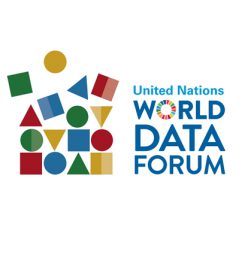Matchmaking for the data revolution: Bringing data producers and users together
23 Oct 2018 02:00h
Event report
Ms Deirdre Appel (Program Manager, Open Data Watch) explained that the session would be in two parts where first, panellists would set the stage on potential opportunities for bringing data producers and users together. It would be followed by an interactive session where audience would discuss questions in groups. Paige Kirby, Senior Policy Advisor at Development Gateway moderated the first session.
Ms Natalia Carfi (Deputy-Director, Open Data Charter) saw an opportunity in more deliberate publishing of open government data. She gave examples of fun data portals where users could find statistics about themselves for instance, on people with similar names; art on open data; as well as the school on data. She explained that data producers could make impact by returning data to the people.
Ms Harpinder Collacott (Executive Director, Development Initiatives) described the opportunity for creating a culture of open data. She spoke about open aid data portals where governments produced data about development aid. Stakeholders in the aid sector, including other governments then use the data to improve transparency and accountability. As users have different needs, academics work with raw datasets for example, while policy makers need policy issues supported by data.
Ms Ayush Ariunzaya (Chairperson, National Stats Office of Mongolia) described how she transformed her office, which had a long history (having been established 95 years ago). It already had good standards and practices internally, but had for many years been producing data that was not palatable to the public. She set up a communications unit that is involved in training, user engagement and the design of a new more interactive website. They have noted that users mostly search about themselves, for example their names and number of people with similar names. The office was also working with champions for statistical information dissemination.
The interactive part of the session included topics such as: the type of data used and produced; capacity and its ability to impact data production; what data producers could do differently to encourage the use of data; and what a user-centric approach to data production would look like.
During the discussion, many people identified themselves as both users and producers. Others were also collectors of data. Some of the challenges identified include the lack of interoperability, which requires data users to go through other processes to make the data usable. Many data producers had also not established good feedback mechanisms for their data products.
Some opportunities include creating awareness on the availability of data, and creating partnerships with producers of data products to have more data published. Users also shared their experiences of statistics offices that had improved their services by availing data online. Many also provided raw data at little or no cost. The issue of cost for data ignited a good discussion. Some were of the view that the business model would enhance feedback mechanisms, as people buying data would have the opportunity to shape the data they need. Others however, were of the view that national statistical offices (NSOs) should provide raw data at the least cost as theirs was a public function.
Users also shared examples of good practices, such as statistical societies that were increasing user capacity through training of groups such as journalists.
Related topics
Related event

